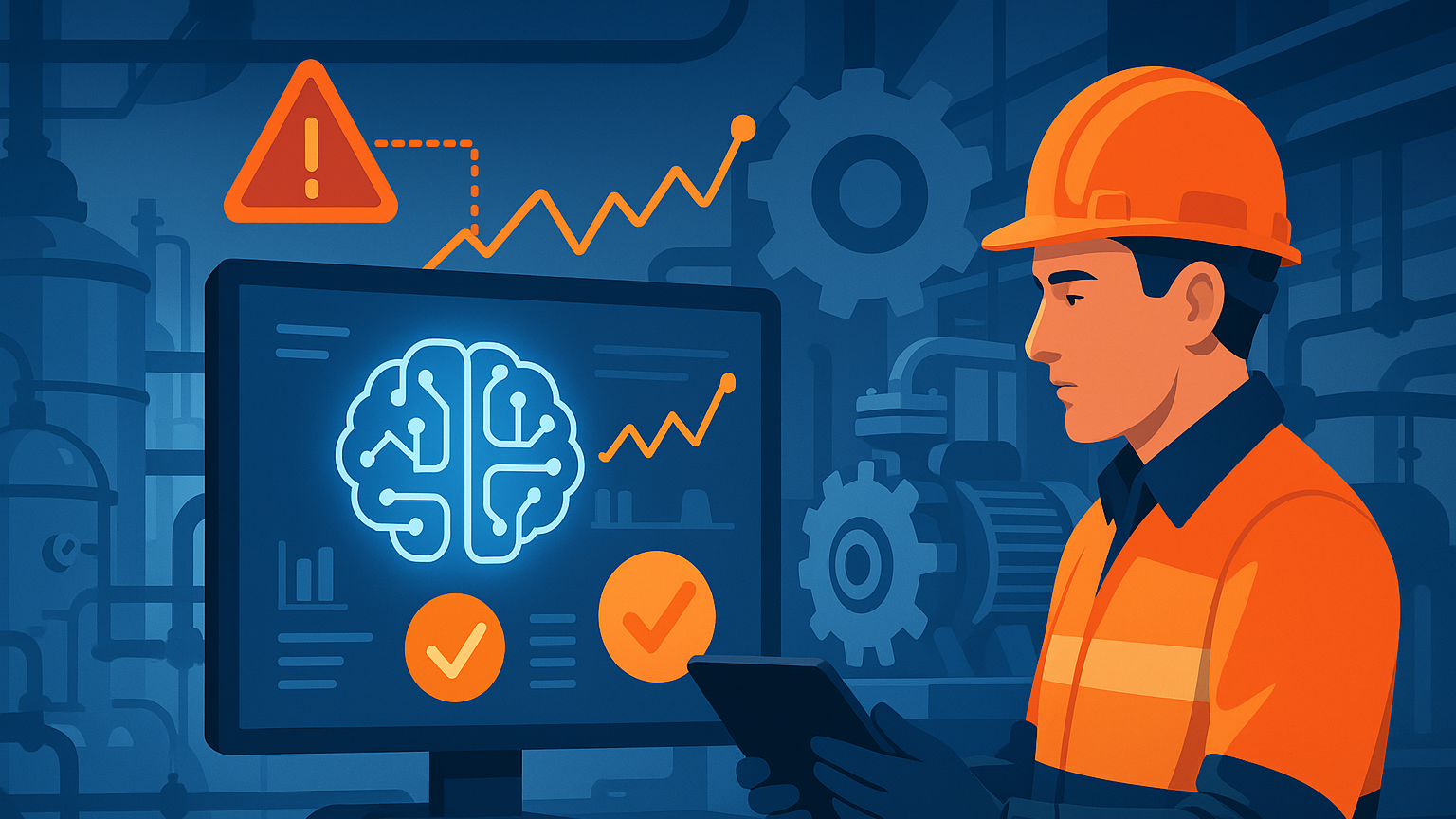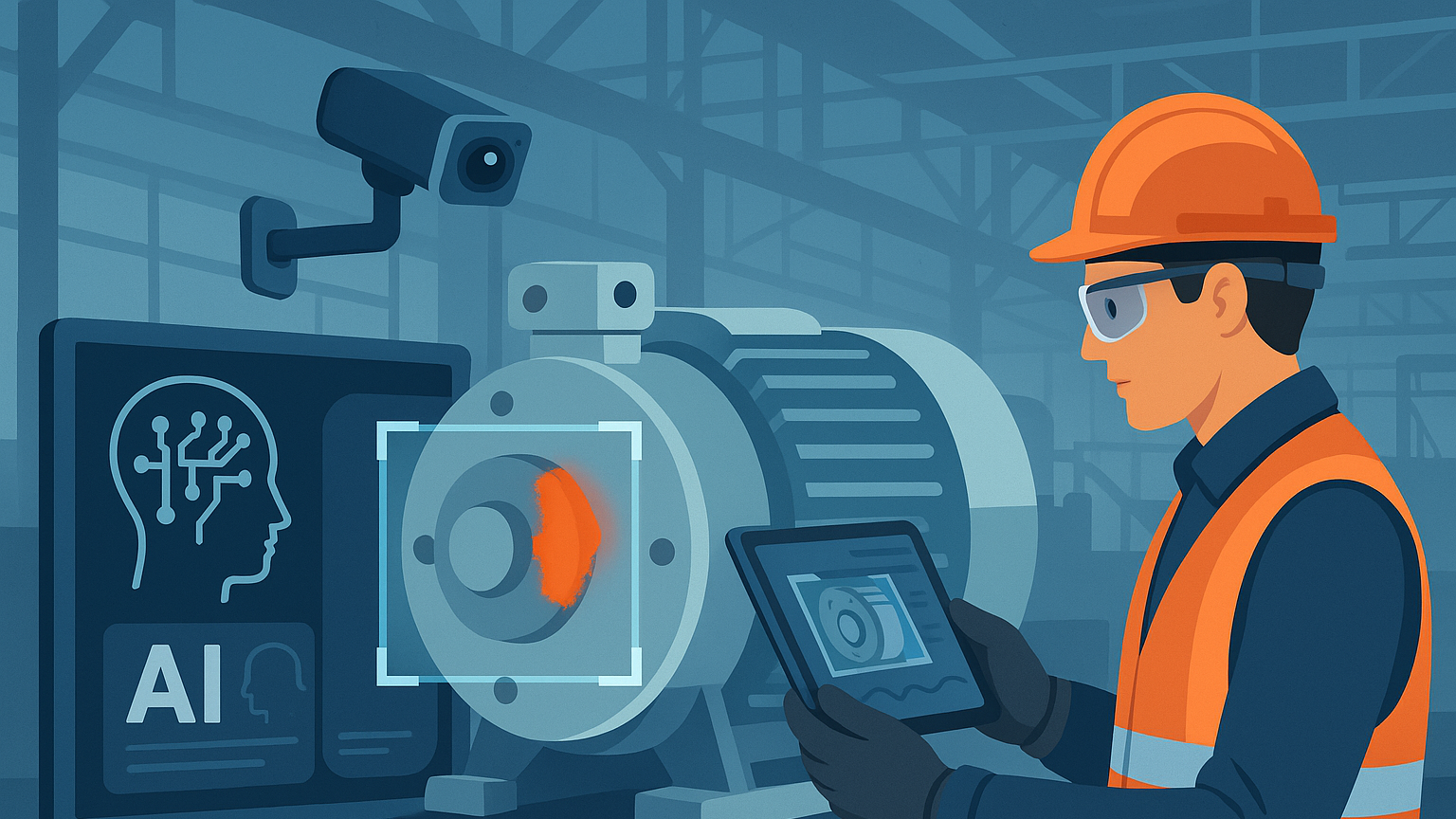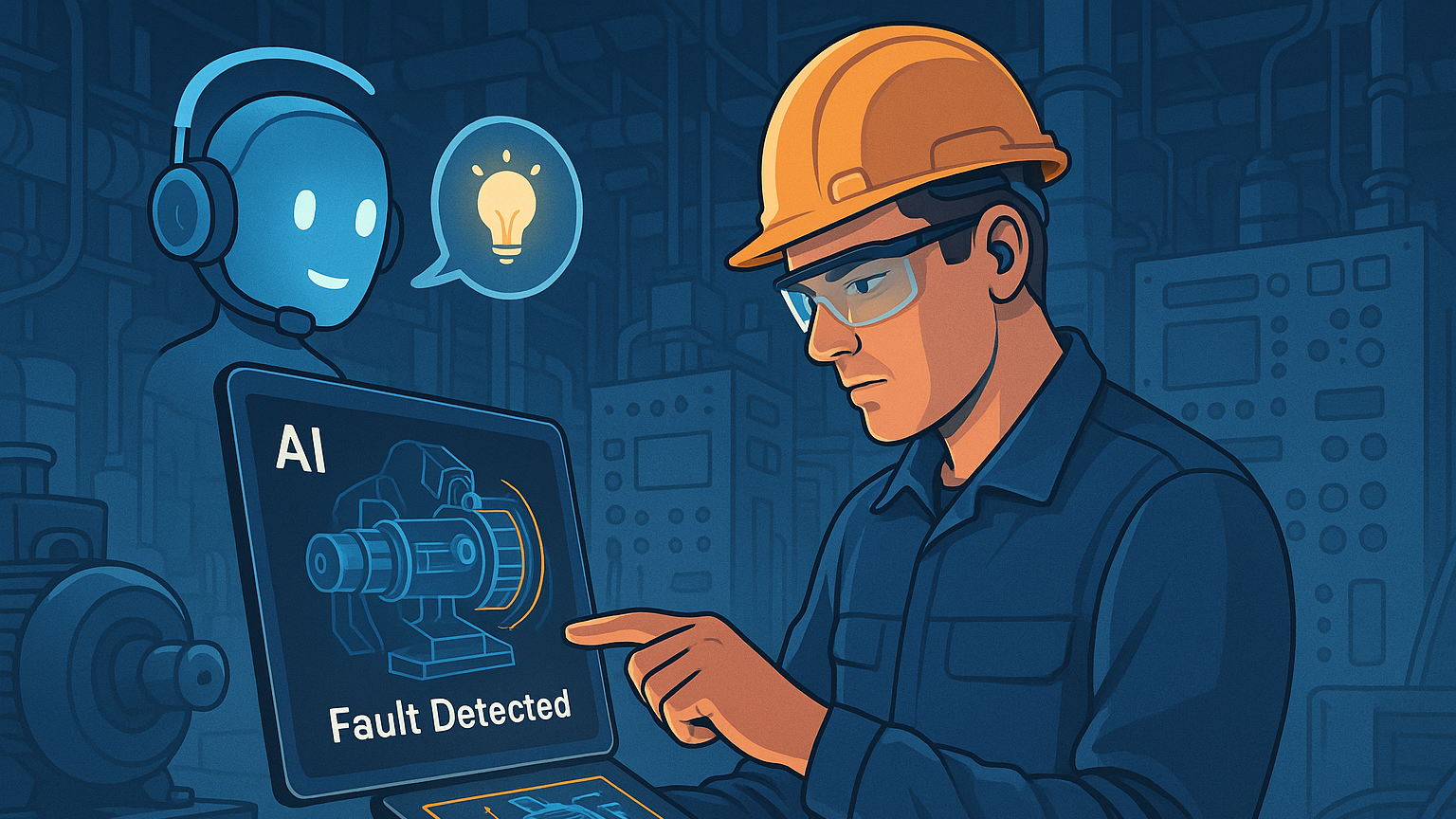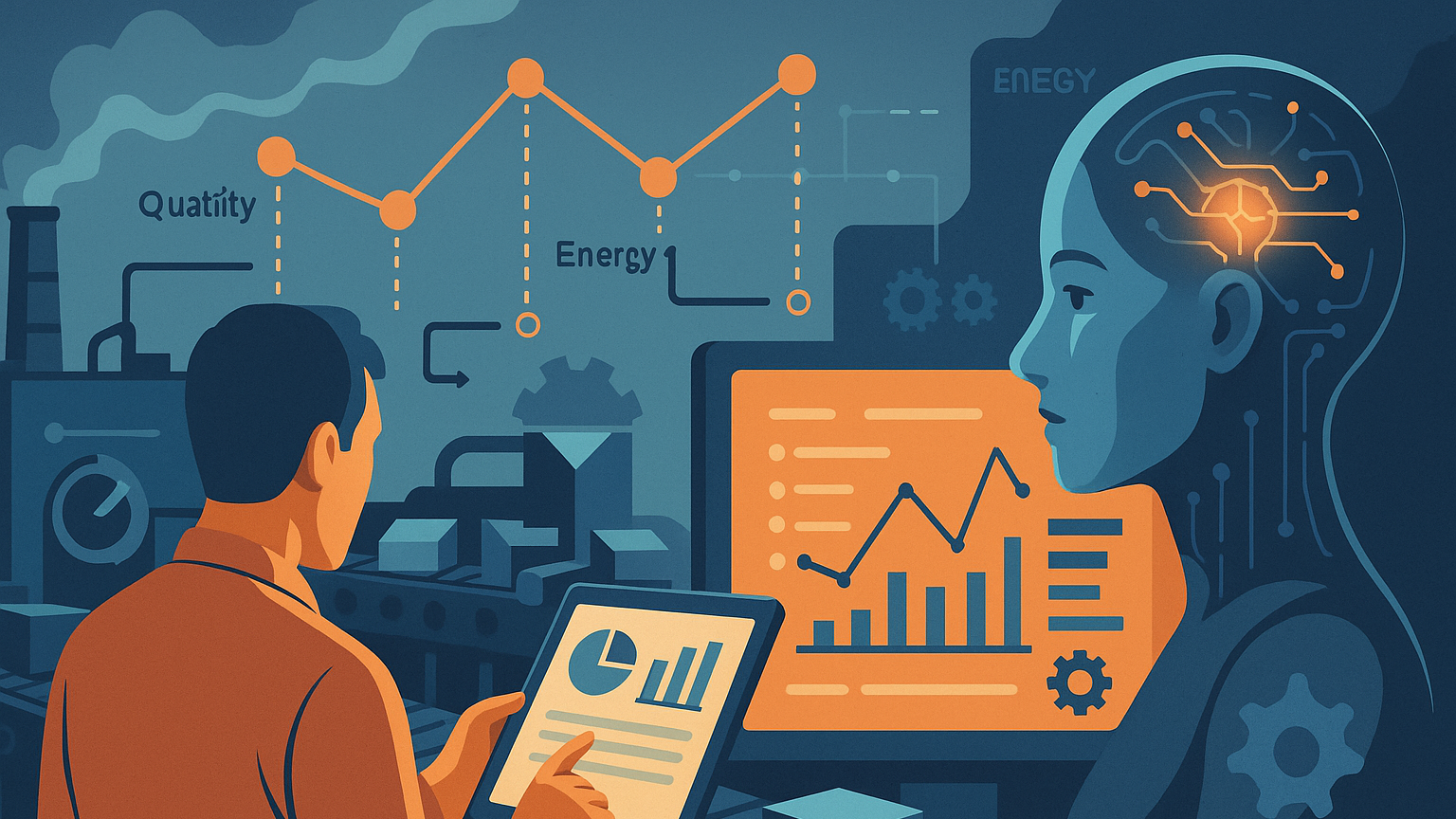
AI in Operations Management for Production Support and Maintenance Planning
You’re operating in a world where uptime, throughput, and safety matter every minute, and AI is changing the rules of the game for operations management. This article helps you understand how AI technologies are reshaping production support and maintenance planning, what practical use cases you can deploy today, and how to integrate AI into existing systems and teams. You’ll get focused facts and actionable advice tailored to business people working across manufacturing, utilities, oil & gas, and other asset-intensive sectors, with clear guidance on increasing productivity through smarter incident handling, predictive maintenance, and optimized planning.

Why AI Matters in Operations Management
AI matters because it lets you convert the flood of operational data into timely, actionable decisions, reducing downtime and cost while improving safety and asset life. As you collect more sensor data, logs, and operator notes, AI helps you surface patterns and anomalies that would otherwise be missed or take hours to diagnose. For production support and maintenance planning specifically, that means faster incident resolution, more accurate maintenance schedules, lower spare parts inventories, and a shift from reactive firefighting to proactive optimization—outcomes that directly affect margins and customer satisfaction.
Core AI Technologies That Drive Value
A handful of AI technologies deliver the biggest impact in operations: supervised and unsupervised machine learning, time-series analysis, computer vision, and natural language processing. Each has a distinct role—predicting failures, spotting visual defects, filtering noisy alerts, and extracting knowledge from text and logs—so you’ll often combine techniques to solve real problems. Understanding what each technology contributes enables you to choose the right approach for your environment and to set realistic expectations about accuracy, latency, and integration effort.
Machine Learning and Predictive Models
Machine learning gives you models that can predict equipment failures, forecast demand for spare parts, and recommend process setpoints to improve throughput. You’ll train models on historical failure data, maintenance records, and operational telemetry to estimate metrics like remaining useful life (RUL) or failure probability. The key for you is to select the right features, account for drift as equipment or operating conditions change, and validate models with realistic holdout periods so predicted gains translate into real-world savings without surprises.
Computer Vision and Image-Based Inspection
Computer vision helps you automate visual inspections, detect surface defects, monitor worker compliance with safety gear, and assess equipment conditions remotely. If your processes involve visual quality checks or cameras are already installed near critical equipment, you can deploy vision models to flag issues earlier than manual inspection cycles allow. You’ll need labeled images or a semi-supervised approach to bootstrap models, and a plan for handling variations in lighting, perspective, and environmental conditions so accuracy remains high on the factory floor.

Natural Language Processing and Knowledge Management
Natural language processing (NLP) unlocks value from your unstructured records—work orders, operator shift notes, incident reports, and vendor manuals. By extracting entities, clustering similar incidents, and surfacing relevant troubleshooting steps, NLP reduces mean time to repair and rescues tribal knowledge that’s often locked in individual brains. You can use NLP to index documents, summarize recurring problems, and power conversational assistants that guide technicians through diagnosis and fixes, lowering onboarding time and improving first-time-right repairs.
Anomaly Detection and Time-Series Analysis
Anomaly detection methods and time-series forecasting are central to early warning systems that reduce unplanned downtime. These techniques highlight deviations from expected behavior without needing explicit failure labels, which is useful when you have limited historical failures to learn from. You’ll apply them to sensor streams and process variables to detect slow drifts, sudden spikes, or subtle patterns that presage failure. The trick is tuning sensitivity to limit false positives so you avoid overwhelming operators with noise while still catching real issues early.
Key Use Cases in Production Support
AI enhances production support by improving incident triage, reducing alert fatigue, and enabling smarter operator assistance, all of which increase throughput and reduce downtime. You can automate routine diagnostics, correlate events across systems to find root causes faster, and provide technicians with context-aware guidance during incidents. By embedding AI into your production support processes, you’ll make your teams more proactive and efficient, allowing them to focus on high-value decisions rather than repetitive data sifting.

Automated Incident Triage and Root Cause Analysis
When an incident occurs, AI can help you prioritize and triage by correlating alarms, historical incident patterns, and real-time process data to propose likely root causes. For you, that means faster isolation of failing components and shorter time-to-resolution because technicians receive ranked hypotheses and suggested checks instead of raw alarm lists. Implementing this effectively requires quality historical incident labels and a feedback loop where technicians confirm or correct AI-suggested diagnoses so models learn and improve.
Intelligent Alerting and Operator Assist
AI helps you tame the alarm storm by grouping related alerts, suppressing redundant notifications, and elevating only those anomalies that matter to production targets. You’ll benefit from contextual alerting that considers process state, operator activity, and recent interventions, enabling more meaningful operator decisions. Paired with in-situ assistive interfaces—visual overlays, mobile guidance, or voice assistants—AI reduces cognitive load on your staff and improves the consistency and speed of their responses.
Process Optimization and Knowledge Augmentation
Beyond disruptions, AI can continuously recommend minor process adjustments that yield measurable throughput and yield improvements. You’ll use reinforcement learning or model-based optimization to suggest setpoints that balance quality, speed, and energy consumption. Meanwhile, AI-curated knowledge bases and decision-support dashboards ensure operators get the right parameters and troubleshooting steps at the right time, keeping institutional knowledge evergreen and actionable during production runs.

Key Use Cases in Maintenance Planning
In maintenance planning, AI shifts you from calendar-based interventions to condition-aware programs that schedule work precisely when it delivers value. This lowers overall maintenance costs, minimizes disruptions, and extends asset life. AI-driven planning optimizes crew schedules, coordinates spare parts procurement, and balances risk—so you can ensure safety and availability while using fewer resources more effectively.
Predictive and Condition-Based Maintenance
Predictive maintenance uses models to estimate RUL and flag components that require attention before they fail, while condition-based maintenance triggers actions based on live sensor thresholds and aggregated health scores. For you, this reduces unnecessary preventive interventions and prevents catastrophic failures that cause long outages. Successful deployment depends on establishing reliable health indicators, integrating sensor data into analytics pipelines, and defining clear actions and SLAs once the model signals an impending issue.
Work Order Prioritization, Scheduling, and Spare Parts Optimization
AI helps prioritize work orders based on risk, cost, and impact to production, then schedules crews in a way that minimizes travel time and downtime while respecting skill requirements and safety constraints. It also forecasts spare parts demand and optimizes inventory levels to prevent stockouts without inflating capital tied up in parts. By automating these planning tasks, you’ll see improvements in wrench time utilization, first-time fix rate, and a reduction in emergency procurement costs.

Data and Infrastructure Considerations
Your AI ambitions will succeed or fail based on the quality of your data and the infrastructure you choose to process it. You’ll need a pragmatic strategy to collect, store, and curate diverse data types—time series, images, logs, and text—while ensuring latency and availability match operational needs. Deciding how much processing happens at the edge versus in the cloud, implementing robust data governance, and building scalable pipelines are foundational tasks that demand early attention to avoid costly rework later.
Data Collection, Sensors, and Instrumentation
You’ll often find gaps in instrumentation when you start AI projects, so prioritize sensors for the assets or process points with the highest impact and feasibility. Retrofitting older equipment with IoT sensors, ensuring synchronized timestamps across data sources, and standardizing sampling rates are practical steps that improve model reliability. Start with a limited set of strategically placed sensors to prove value, then scale instrumentation in phases based on the insights you uncover.
Data Quality, Labeling, Governance, and Privacy
High-quality labels and consistent metadata are crucial for supervised models, and governance ensures you can trust the insights AI provides. You’ll need processes for labeling incidents, cleaning and normalizing signals, and managing schema changes as systems evolve. Don’t overlook privacy and contractual obligations when data crosses organizational boundaries; establish clear ownership, retention policies, and access controls so your AI projects remain compliant and auditable.
Edge, Cloud, and Hybrid Processing
Deciding between edge, cloud, or hybrid processing depends on latency, bandwidth, and security constraints. You’ll run low-latency anomaly detection or camera inference at the edge to respond fast, while using cloud resources for heavy model training, long-term data storage, and fleet-wide analytics. Designing a hybrid architecture reduces risk and cost while enabling scalable model updates, but it requires robust orchestration and secure data pipelines between edge devices and centralized services.
Integration with Existing Systems and Workflows
AI needs to fit into your operational ecosystem, not replace it. Seamless integration with CMMS, ERP, SCADA, and MES systems is essential so AI recommendations convert into scheduled work, purchase orders, and operator actions. You’ll need mapping logic, bi-directional APIs, and user interfaces that make AI outputs understandable and actionable for planners and technicians, ensuring the insights become routine parts of your operations.
Connecting CMMS, ERP, SCADA and MES
Integrating AI with your CMMS and ERP systems lets predictions automatically generate work orders, procure parts, and update maintenance histories, while connections to SCADA and MES enable real-time ingestion of process data. You’ll focus on building standardized interfaces, event streaming, and reconciliation logic so AI-driven changes are traceable and auditable. Don’t forget to align naming conventions and asset hierarchies across systems; mismatches there are a common source of integration headaches.
Human-in-the-Loop, Interfaces and Change Management
Maintaining a human-in-the-loop approach will increase adoption and reliability: operators confirm diagnoses, technicians validate maintenance priorities, and planners approve schedule adjustments. You’ll design interfaces that provide succinct rationale for AI recommendations, offer overrides, and capture feedback for continuous learning. By embedding AI as a decision-support layer rather than an automated dictator, you preserve operator agency and foster trust, which is crucial for cultural buy-in.
Change Management and Skills
Bringing AI into operations is as much a people and process challenge as a technical one, and your deployment will depend on training, communication, and the evolution of roles. You’ll need to invest in upskilling technicians and planners in data literacy, in creating new roles like AI ops champions, and in redefining KPIs so they align with AI-driven workflows. A clear change management plan that articulates benefits, expectations, and training paths will smooth the path to adoption and help you avoid resistance.
Upskilling Teams and Shifting Roles
As AI assumes routine diagnostic and planning tasks, your team’s focus shifts toward exception handling, complex troubleshooting, and continuous improvement. You’ll want to provide targeted training—how to interpret model outputs, how to feed corrective feedback, and how to use new tools—so your staff feels empowered rather than displaced. Establishing role transitions, career progression for technicians who become AI-native practitioners, and mentorship programs makes the transformation sustainable.
Building Trust with Explainability and Transparency
Explainability is essential if you expect frontline staff to rely on AI recommendations. You’ll prefer models and interfaces that explain why a prediction was made, show the key signals driving a decision, and surface confidence levels. Transparent workflows that include audit trails and human feedback loops reduce skepticism and help you identify when models are acting on spurious correlations, allowing you to correct issues before they cause operational disruptions.
Implementation Roadmap and Scaling
A pragmatic roadmap takes you from a focused pilot to enterprise-wide scale, balancing speed with rigor so you capture quick wins while building long-term capabilities. You’ll start with high-impact, low-risk assets or processes, validate business metrics, and then expand to additional equipment or plants while consolidating data infrastructure and governance. A staged approach reduces upfront cost, accelerates learning, and creates internal advocates whose success stories make scaling smoother.
Pilot Projects, KPIs and Measuring Success
Choose pilot projects that are measurable, have available data, and present clear business cases—like reducing MTTR for a common failure mode or cutting spare parts costs for a critical asset class. Define KPIs up front, such as reduction in unplanned downtime, mean time to repair, first-time-fix rate, and maintenance spend per asset, and use those KPIs to evaluate success and justify further investment. You’ll iterate quickly, keeping pilots short and focused to gather evidence and refine implementation patterns before scaling.
Build vs Buy and Vendor Selection
Deciding whether to build in-house or purchase vendor solutions depends on your team’s capabilities, timeline, and the need for customization. If you have strong data and engineering teams and unique processes, building can yield differentiated value; if speed and packaged integrations matter, a vendor solution may be preferable. When evaluating vendors, assess their domain experience, integration capabilities with your systems, model explainability, support for MLOps, and total cost of ownership rather than feature checklists alone.
Risks, Compliance, and Security
Introducing AI into operations introduces new risk vectors alongside benefits; you’ll need to manage cyber risks, avoid unsafe automation, and ensure regulatory compliance. Risks include model errors that could lead to improper maintenance actions, attackers exploiting connected devices, and privacy exposures in shared datasets. You’ll mitigate these risks with rigorous testing, role-based access control, secure update mechanisms for edge devices, and formal approval gates for automated actions.
Cybersecurity and Operational Resilience
AI systems must be secure by design because attackers can target data pipelines, model parameters, or edge devices to cause false alarms or mask real issues. You’ll implement encryption, identity management, and anomaly detection for the infrastructure itself, not just the assets it monitors. Operational resilience also means planning for partial outages: ensure fail-safe manual procedures remain clear and that operators can act without AI assistance when connectivity or models are degraded.
Regulatory and Safety Compliance
AI-driven maintenance decisions can have safety and regulatory implications, especially in heavily regulated sectors. You’ll document decision logic, keep thorough audit logs of automated and suggested actions, and involve safety and compliance teams early in design to ensure recommendations meet legal and procedural requirements. Incorporate periodic model reviews and validations into your compliance cycles so you can demonstrate ongoing fitness for purpose.
Best Practices and Practical Tips
Practical deployment of AI in operations starts with prioritizing high-value problems, keeping models interpretable, and institutionalizing data processes. You’ll set clear success criteria, involve operators from day one, and create feedback loops so models improve with real-world use. Emphasize modular architectures that allow you to swap models and integrate new data sources incrementally, and don’t underestimate the value of good visualization and alert design to drive adoption.
Future Trends in AI for Operations Management
Looking ahead, expect tighter integration of AI across the full production and asset lifecycle, with more autonomous orchestration between production planning, real-time control, and maintenance systems. Advances in transfer learning and federated learning will let you leverage cross-plant knowledge without compromising data privacy, and digital twins will become more predictive as physics-based models blend with data-driven approaches. For you, this means increasingly prescriptive systems that not only predict issues but coordinate end-to-end responses across people and systems.
Conclusion
AI offers a compelling opportunity to transform production support and maintenance planning from reactive, labor-intensive processes into proactive, optimized systems that improve uptime, reduce cost, and enhance safety. Success depends on choosing the right technologies for the problem, investing in data and integration, involving your people, and managing risks responsibly. If you start with focused pilots, measure value carefully, and scale with strong governance, AI can become a dependable partner in your operations toolkit rather than a risky experiment.
